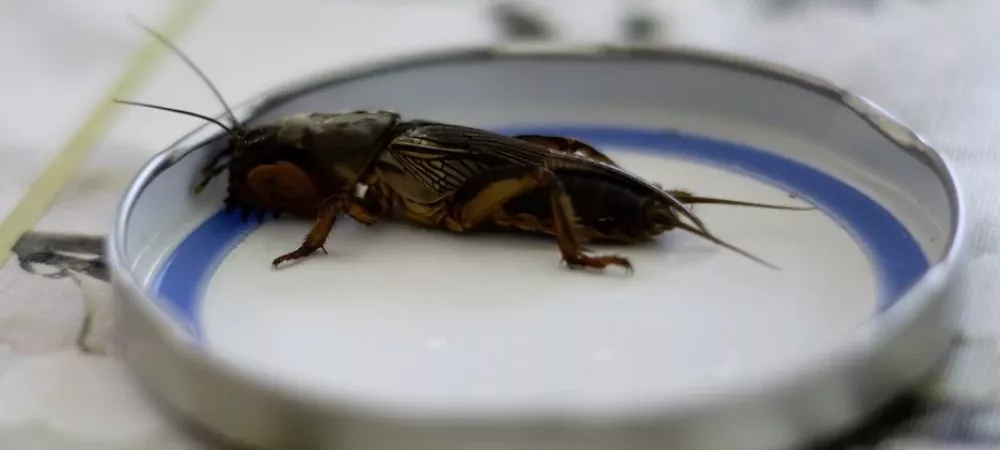How to Get Rid of Mole Crickets in Your Florida Yard

One of the benefits of living in Florida is the year-round warm weather, but the downside is that we have to worry about lawn maintenance and pest protection year-round. One lawn pest, in particular, can cause huge amounts of damage to your lawn if you aren’t careful—the mole cricket.
What Are Mole Crickets?
Mole crickets are a type of cricket that can grow up to an inch long. They have grayish-brown, velvety bodies with short wings and large, black eyes. Mole crickets get their name from their wide, claw-like front legs, which are perfect for digging through your yard.
Types of Mole Crickets in Florida
There are three common types of mole cricket found in Florida:
- Tawny Mole Cricket: The tawny mole cricket is native to South America. They can be found in all the southeastern states, including Florida. The tawny mole cricket feeds on vegetable seedlings, turf, and pasture grasses.
- Southern Mole Cricket: The southern mole cricket feeds primarily on ground-dwelling insects. It damages turf and pasture grasses by tunneling in search of food. The southern mole cricket is slimmer and much more active. They have been known to play dead when captured.
- Short-Winged Mole Cricket: Short-winged mole crickets have shorter wings and cannot fly. They feed on vegetable seedlings, turfgrass, plant roots, stems, and leaves, similar to the tawny mole cricket. They are the most common species along the southeastern coast of Florida.
What Do Mole Crickets Eat?
Mole crickets are omnivores, and their diet includes a balance of grass, roots, shoots, and insects. As they tunnel for insects and roots, they disturb the grass and cause brown patches, which are quickly replaced by weeds.
When Are Mole Crickets Active?
Due to our weather, mole crickets are active year-round in Florida, though they typically do the most damage to yards during spring or fall. Mole crickets are nocturnal, which means they only come out to feed at night, making identifying them difficult.
Do Mole Crickets Bite?
Mole crickets have been known to bite humans but will only do so if provoked or handled. They are not venomous, and bites are not known to cause symptoms or allergic reactions.
Signs of a Mole Cricket Infestation
Here are three easy ways to tell if you have mole crickets in your yard:
- Since it is not easy to know if mole crickets are present in your yard, a good way to find out is to look for disturbed soil, irregular tunnels, and dying grass. As they tunnel, they leave uplifted turf as real moles do. This can damage grassroots and lead to brown or dead patches.
- Mole crickets also attract predators that feed on them, such as raccoons, skunks, birds, and armadillos, who will dig up your yard in search of them.
- Another way to find out if you have mole crickets is to flush them out. Mix 1.5 fluid ounces of liquid dish soap into 2 gallons of water and pour the concoction over 4 square feet of yard. Mole crickets will crawl to the surface within minutes to get air.
How to Get Rid of Mole Crickets
Removing mole crickets is a tricky job and best left to the professionals who handle mole cricket removal. You can help control and prevent mole crickets naturally by enlisting the help of their natural predators. Consider purchasing parasitic wasp larvae, tachinid flies, or parasitic nematodes, which all feed on the mole cricket and do not destroy your yard.
Call the Professionals
Deans Services has 30+ years of experience dealing with mole crickets and other lawn-damaging pests in Florida. Our Tavares lawn care program is designed to feed and nurture your lawn, eliminate weeds, and prevent them from coming back. We have the skills and expertise to turn your yard into the yard of your dreams. Give us a call today at 352-515-9826 or contact us online.
